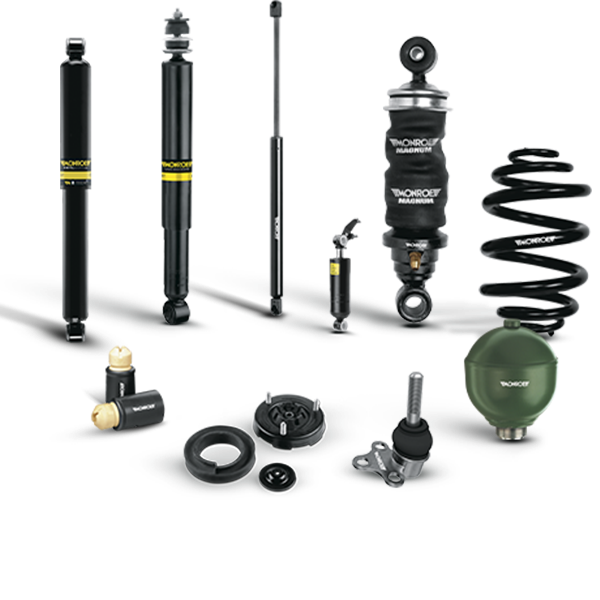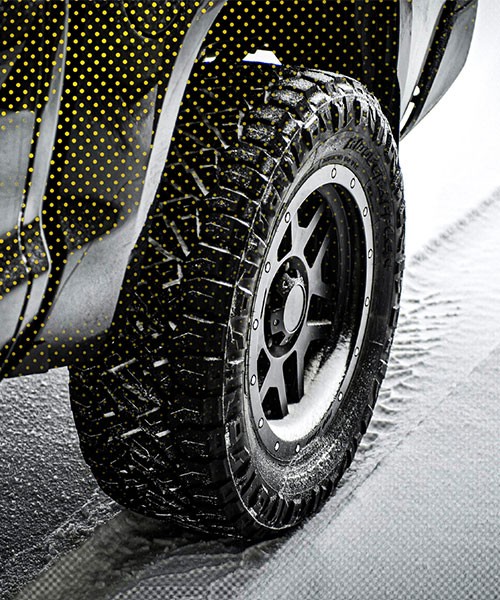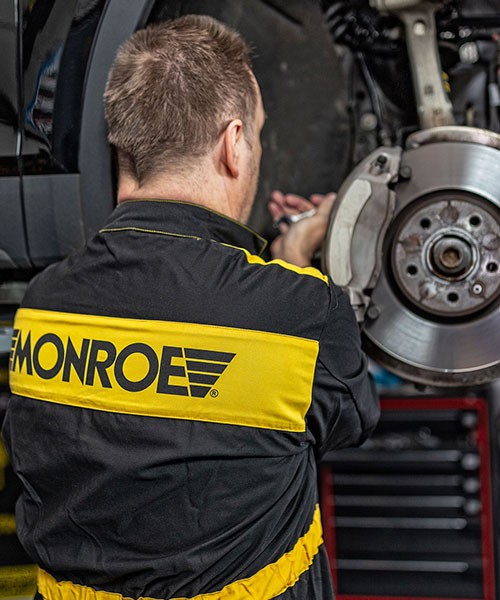Critical for Improved Driving Safety
Crucial for steering, stopping and stability, shocks and struts are one of the most important safety features of your vehicle. Like many parts, shocks and struts can gradually wear out during the course of normal vehicle operation.
Most people realize shock absorber or strut failures can negatively impact comfort, but many don’t realize that they can also compromise your vehicle’s steering, handling and braking. Inspecting these safety-critical ride control parts on a regular basis helps keep you in control of your vehicle, and your passengers safer.
80,000 KILOMETERS RECOMMENDATION
Experts recommend having your vehicle’s shocks and struts inspected every 20,000 kilometers and replaced every 80,000* kilometers. It's relatively easy to determine when tires, brakes and windshield wipers are worn out. However, shocks and struts aren’t as simple to inspect, even though these safety-critical components are highly susceptible to everyday wear-and-tear.
Shocks and struts should be inspected by your local service provider every 20,000 kilometers or every time your vehicle is brought in for tire, brake or alignment services.
WHY 80,000 KILOMETERS?
Testing has shown that original equipment gas-charged shocks and struts degrade measurably by 80,000 kms. Damage to shocks and struts may not be visible – that’s why 80,000 kms is the key number for replacing shocks and struts. Having these parts inspected and replaced if needed ensures that your vehicle is in top operating condition.
What does your odometer read? Is it time for you to get your shocks/struts inspected? If it’s time, make an appointment with your local service provider for a SAFETY TRIANGLE INSPECTION of your suspension system.

Factors That Cause Shocks and Struts to Wear
While ride components wear out due to everyday driving, there are other factors that also can affect the integrity of these parts. Your driving habits and the environment you drive in can have a big effect on the lifespan of your shocks and struts.
For example, a driver in northern climates may need to replace their shocks and struts sooner due to potholes created by freeze/thaw cycles and exposure to road salt. Or if you routinely tow heavy loads, this can cause your shocks and struts to wear faster. Examine your driving habits and the conditions you drive in – you may need to have your shocks and struts inspected more frequently than recommended.
- Shocks and struts may not show any visible signs of wear, but internal components may be past their useful life which could affect your steering, stopping and stability.
- Typical shocks and struts “stroke” an average of 21 million cycles per 19,300 kilometers.
- Shocks and struts are susceptible to additional wear caused by heavy use and severe road/environmental conditions.
- Ride control components interact with – and depend on – other key steering and suspension parts. Failure of any these other parts can affect your shocks and struts.
Learn more about Monroe shock absorbers, find the right car part or find a local repair shop today.
The content contained in this article is for informational purposes only and should not be used in lieu of seeking professional advice from a certified technician or mechanic. We encourage you to consult with a certified technician or mechanic if you have specific questions or concerns relating to any of the topics covered herein. Under no circumstances will we be liable for any loss or damage caused by your reliance on any content.
*Actual mileage and results may vary depending on driver ability, vehicle type, and the type of driving and road conditions.
other articles that might interest you
discover the monroe range
Monroe offers a total steering & suspension solution for vehicles. Discover our shock absorbers, mounting and protection kits, gas springs, coil springs, spheres
and many other steering & suspension parts.


